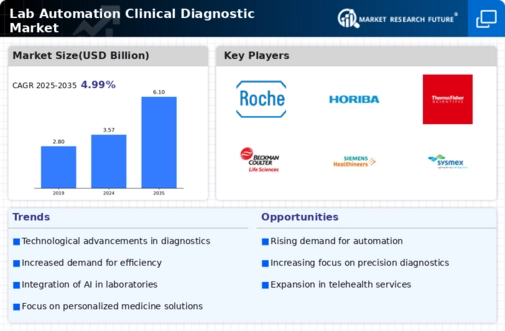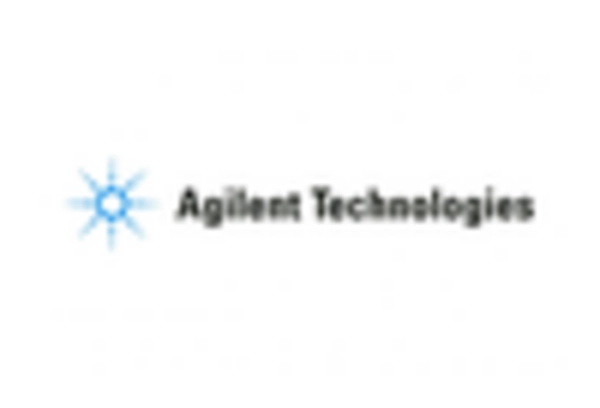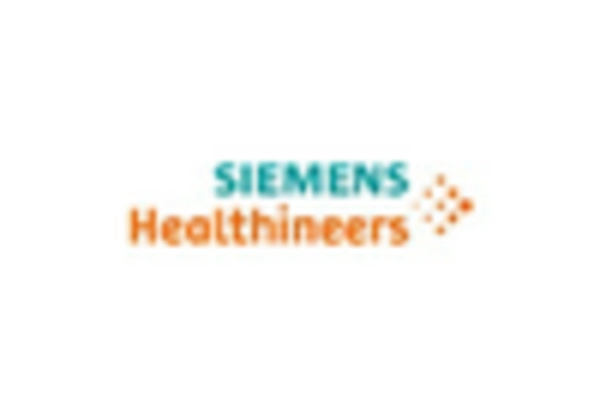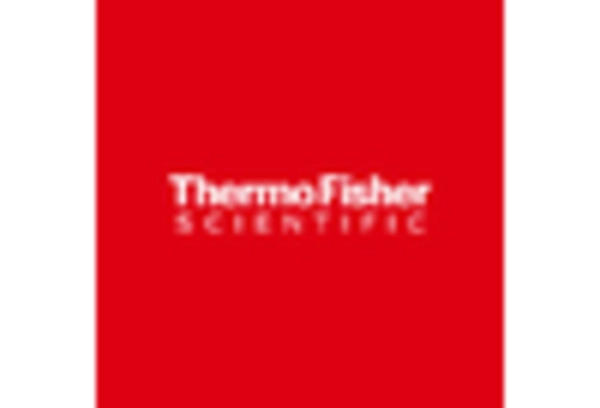Regulatory Support for Automation
Regulatory bodies are increasingly recognizing the importance of automation in enhancing laboratory efficiency and accuracy, which is positively impacting the Lab Automation Clinical Diagnostic Market. Initiatives aimed at streamlining regulatory processes for automated diagnostic devices are emerging, encouraging laboratories to adopt these technologies. For example, regulatory agencies are providing clearer guidelines for the approval of automated systems, which may reduce the time and cost associated with bringing new products to market. This supportive regulatory environment is likely to foster innovation and investment in automation technologies, ultimately benefiting the Lab Automation Clinical Diagnostic Market. As laboratories seek to comply with stringent quality standards, the integration of automated solutions is expected to become more prevalent.
Rising Focus on Personalized Medicine
The Lab Automation Clinical Diagnostic Market is increasingly influenced by the rising focus on personalized medicine. As healthcare shifts towards more individualized treatment approaches, the demand for precise and rapid diagnostic testing is growing. Automation plays a critical role in this transformation by enabling laboratories to conduct complex analyses efficiently and accurately. For instance, automated systems can facilitate the analysis of genetic information, which is essential for tailoring treatments to individual patients. Market trends indicate that the personalized medicine segment is expanding, with projections suggesting substantial growth in the coming years. This trend is likely to drive further investment in automation technologies, thereby enhancing the Lab Automation Clinical Diagnostic Market.
Technological Advancements in Automation
The Lab Automation Clinical Diagnostic Market is experiencing a surge in technological advancements, particularly in automation technologies. Innovations such as robotics, artificial intelligence, and machine learning are streamlining laboratory processes, enhancing efficiency, and reducing human error. For instance, automated liquid handling systems and high-throughput screening technologies are becoming increasingly prevalent, allowing laboratories to process a higher volume of samples with greater accuracy. This trend is supported by data indicating that the automation market is projected to grow at a compound annual growth rate of approximately 10% over the next five years. As laboratories seek to improve turnaround times and reduce operational costs, the adoption of these advanced technologies is likely to accelerate, further driving the Lab Automation Clinical Diagnostic Market.
Cost Efficiency and Resource Optimization
Cost efficiency and resource optimization are becoming paramount in the Lab Automation Clinical Diagnostic Market. Laboratories are under constant pressure to reduce operational costs while maintaining high-quality standards. Automation technologies offer a viable solution by minimizing manual labor, reducing errors, and optimizing resource allocation. For instance, automated systems can significantly decrease the time required for sample processing, leading to lower labor costs and increased throughput. Market analysis indicates that laboratories implementing automation can achieve cost savings of up to 30% in operational expenses. As the demand for cost-effective solutions continues to rise, the adoption of automation in clinical diagnostics is expected to accelerate, further propelling the Lab Automation Clinical Diagnostic Market.
Increasing Demand for High-Throughput Testing
The Lab Automation Clinical Diagnostic Market is witnessing a growing demand for high-throughput testing capabilities. As the need for rapid and accurate diagnostic results intensifies, laboratories are increasingly investing in automated systems that can handle large volumes of tests simultaneously. This shift is particularly evident in areas such as genomics and infectious disease testing, where the ability to process hundreds or thousands of samples in a single run is crucial. Market data suggests that the high-throughput screening segment is expected to account for a significant share of the overall market, driven by advancements in automation technologies. Consequently, laboratories that adopt high-throughput automation solutions are likely to gain a competitive edge, thereby propelling the Lab Automation Clinical Diagnostic Market forward.


















Leave a Comment